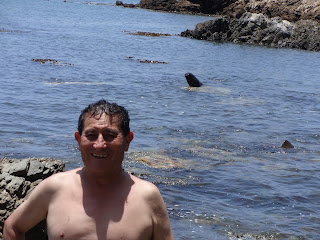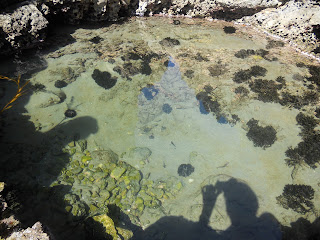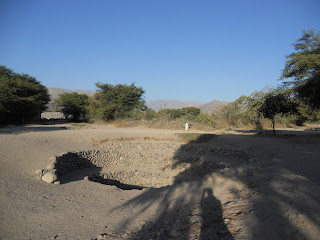One of the other great things about Marcona is its proximity to the San Fernando Reserve. Anny's uncle arranged a tour for us there and it was one of the best experiences of the trip! Although it was a long trip through the sand, it was worth every minute. We saw many different animals and birds and saw some beautiful scenery.
 |
| The catedral de San Fernando - a similar rock formation in Paracas was destroyed in the 2007 earthquake, but this one has stood firm. |
 |
| This reserve was preserved as a habitat for the sea lions. We saw many colonies [or pods - I had to look up the name for a group of sea lions!] throughout the day. |
 |
| I was really excited to finally see penguins...even though it was from quite a height! |
 |
| The water was so clear, it was as if they were swimming in a pool. |
 |
| The white rock on the right is home to another waddle [colony/rookery - more research] of penguins. |
 |
| We met a diver who returned with his fresh catch of octopus. |
 |
| Birds are not really my thing, so I don´t have a clue about these. |
 |
| I kept trying to catch a picture of the crabs, but they were too fast for me! |
 |
| Luckily, this pod of sea lions decided to relax quite close to the shore. |
 |
| It seems some of them were as curious about us as we were of them! |





















































